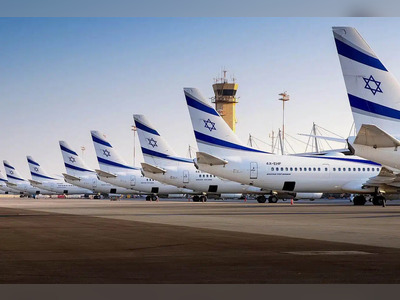Asia-Pacific dominates world’s busiest flight routes, with South Korea’s Jeju–Seoul corridor leading global rankings
Nine of the ten busiest air routes in 2024 were in the Asia-Pacific region, led by the Jeju–Seoul service carrying over 13 million passengers, while the Boeing 737 remained the world’s most-used aircraft.
Nine of the world’s ten busiest passenger flight routes in 2024 were located in the Asia-Pacific region, according to international aviation data.
The highest-traffic corridor was the 1 hour 15 minute domestic service between Jeju (CJU), a South Korean island resort city, and the capital Seoul (GMP), which carried more than 13 million passengers during the year.
In North America, the busiest route was the transcontinental service between New York’s John F.
Kennedy International Airport (JFK) and Los Angeles International Airport (LAX), with 2.2 million passengers recorded in 2024.
Europe’s most travelled route was the one-hour flight between Barcelona (BCN) and Palma de Mallorca (PMI), serving 2 million passengers.
In Latin America, the one-hour domestic flight between Bogotá (BOG) and Medellín (MDE) in Colombia topped the region with 3.8 million passengers.
Africa’s most popular route was the two-hour domestic service between Cape Town (CPT) and Johannesburg (JNB) in South Africa, which carried 3.3 million passengers.
The most widely used aircraft globally in 2024 was the Boeing 737 family, including all variants, which completed 10 million flights.
It was followed by Airbus’s narrowbody aircraft: the A320, which operated 7.9 million flights, and the A321, with 3.4 million flights.
Beyond flight route statistics, emerging travel destinations are drawing attention.
In southeastern Turkey, the partially submerged town of Halfeti remains inhabited despite being flooded following the construction of the Birecik Dam in 2000, with its mineral-rich lands producing unique dark roses.
In southern Africa, Angola, a country twice the size of Texas, is opening up to tourism after decades of relative isolation, with improving infrastructure and extensive natural landscapes.
In China’s southwest, Chongqing is attracting younger travellers with its dense, multi-level urban landscape in mountainous terrain, including an urban rail line that passes directly through a residential building.
The highest-traffic corridor was the 1 hour 15 minute domestic service between Jeju (CJU), a South Korean island resort city, and the capital Seoul (GMP), which carried more than 13 million passengers during the year.
In North America, the busiest route was the transcontinental service between New York’s John F.
Kennedy International Airport (JFK) and Los Angeles International Airport (LAX), with 2.2 million passengers recorded in 2024.
Europe’s most travelled route was the one-hour flight between Barcelona (BCN) and Palma de Mallorca (PMI), serving 2 million passengers.
In Latin America, the one-hour domestic flight between Bogotá (BOG) and Medellín (MDE) in Colombia topped the region with 3.8 million passengers.
Africa’s most popular route was the two-hour domestic service between Cape Town (CPT) and Johannesburg (JNB) in South Africa, which carried 3.3 million passengers.
The most widely used aircraft globally in 2024 was the Boeing 737 family, including all variants, which completed 10 million flights.
It was followed by Airbus’s narrowbody aircraft: the A320, which operated 7.9 million flights, and the A321, with 3.4 million flights.
Beyond flight route statistics, emerging travel destinations are drawing attention.
In southeastern Turkey, the partially submerged town of Halfeti remains inhabited despite being flooded following the construction of the Birecik Dam in 2000, with its mineral-rich lands producing unique dark roses.
In southern Africa, Angola, a country twice the size of Texas, is opening up to tourism after decades of relative isolation, with improving infrastructure and extensive natural landscapes.
In China’s southwest, Chongqing is attracting younger travellers with its dense, multi-level urban landscape in mountainous terrain, including an urban rail line that passes directly through a residential building.











